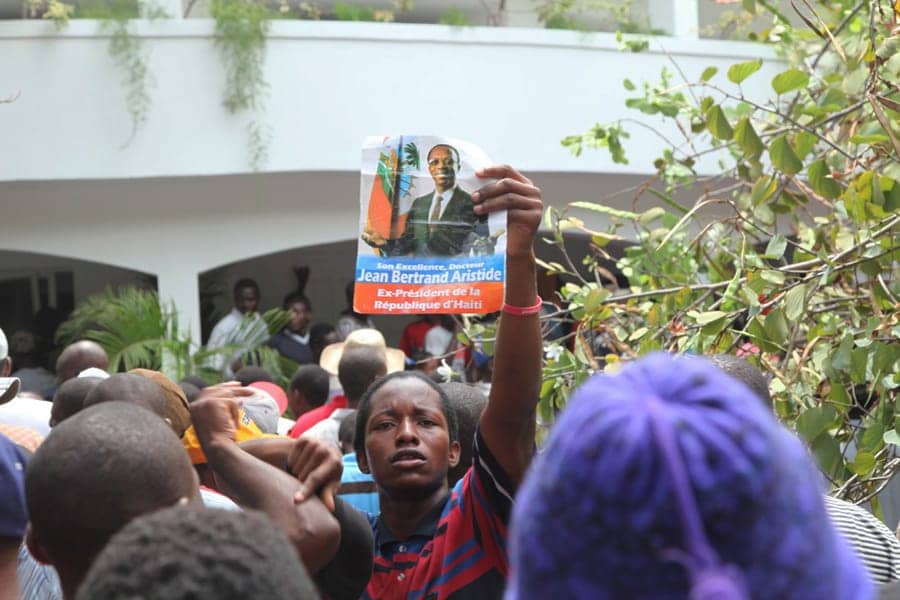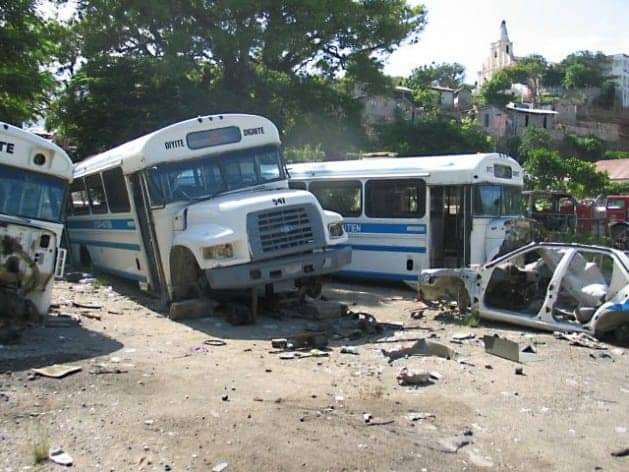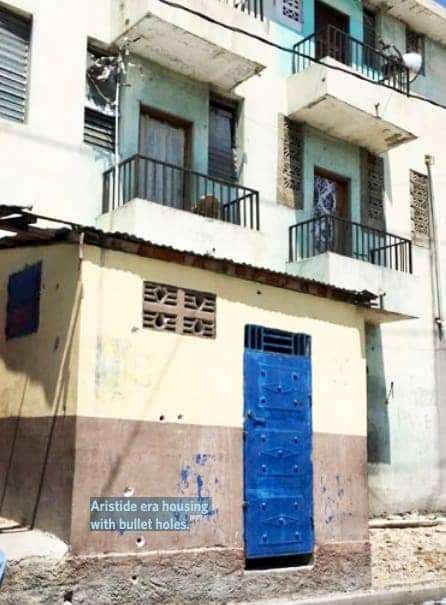
by Haiti Action Committee
Recently the New York Times published an article about the increasing power of Haitian gangs. The article was correct in describing how the gangs operate and how they are financed by business and political elites, but it falls into the Times’ historical pattern of disparaging Aristide and the accomplishments of the Lavalas administrations. Haiti Action Committee member Charlie Hinton sent the Times a 173-word condensed version of the letter below, but they haven’t published it, so we want to share the letter in an expanded form:
To the Editor: I’m writing to clarify two misrepresentations about Haiti’s former President Jean-Bertrand Aristide in your article on the advance of Haitian gangs. The gangs plaguing Haiti today started to form after the 1986 overthrow of Baby Doc Duvalier, during the five-year period of military dictatorships before Aristide’s presidency began.
Known in Haitian Kreyol as zenglendos, they included members of Duvalier’s tonton macoutes death squad and the Haitian military. They carried out robberies and home invasions and assassinated democracy activists. Residents formed neighborhood watch groups for protection and self defense. These were not “gangs,” as the Times article maintains.

On the other hand, Chérizier’s G9 gangs, per your article, are supported by business and political elites and use rape, murder and terror – even burning people alive – to suppress protests, steal property and force people to vote a certain way. The origin of these gangs was not under Aristide, and there is no evidence of systematic state sponsored violence during the Aristide years (see pp. 5-10), unlike today.
The situation has now become so out of control that gangs control the major highways running north and south out of Port-au-Prince and from the port into the city, forcing Haitians to pay a ransom to move goods almost anywhere in the country. These gangs continue to be allowed to flourish by the administration of Ariel Henry, who was appointed prime minister by the assassinated president Jovenel Moise and has zero popular credibility.

Henry has been maintained in power by the US and the Core Group that control Haiti, despite ongoing demonstrations calling for his removal that are met with intense repression. At the same time, for land grabs, Haitians are being terrorized to leave poor neighborhoods, creating both an internal and external refugee crisis. The fact that the actions of these gangs historically target the neighborhoods that support Aristide makes clear their differentiation from the Aristide’s Lavalas administrations.

Finally, in your article, Aristide did not “flee” Haiti. He and his wife were kidnapped in the dead of night by US military forces, flown on a US military plane and dumped in the Central African Republic. One of the reasons was his call for France to repay its $21.7 billion debt to Haiti, which the Times documents in its exposé, The Ransom.
Charlie Hinton
Charlie Hinton is a member of the Haiti Action Committee, www.haitisolidarity.net. He may be reached at lifewish@lmi.net.





